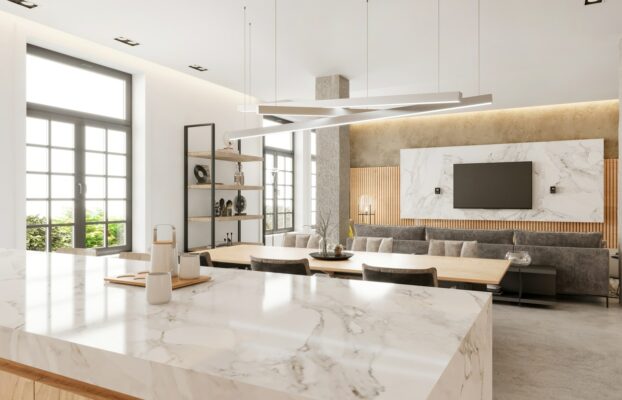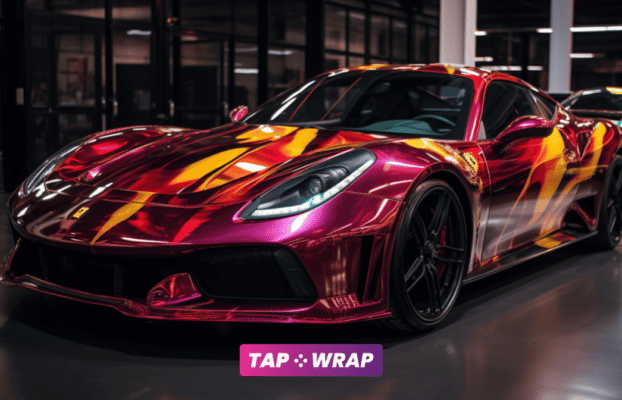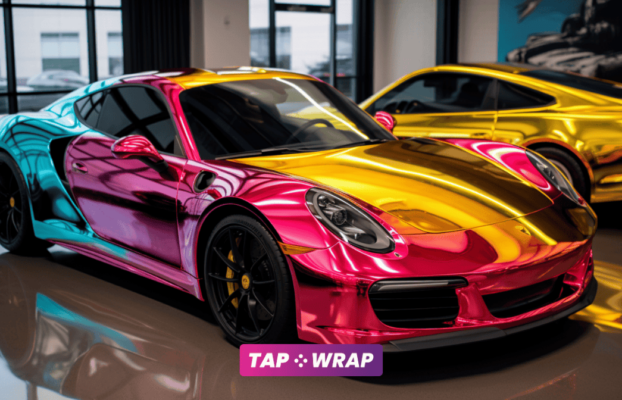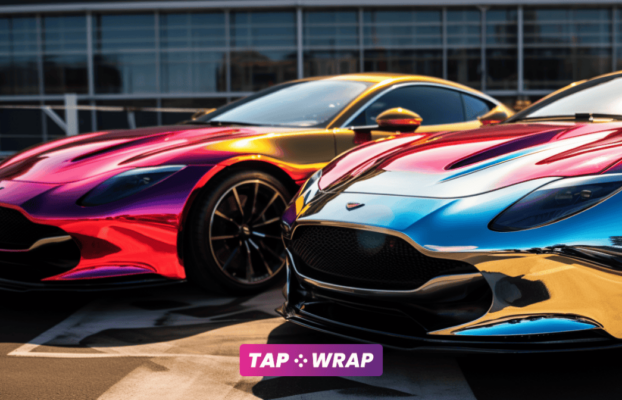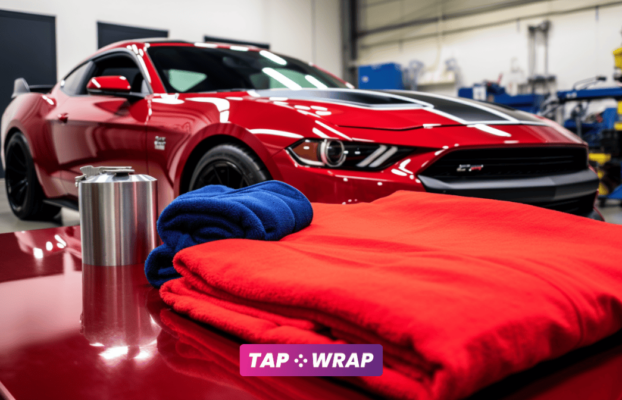Paint protection film (PPF) is a type of protective coating that is applied to the exterior of a vehicle to protect it from scratches, chips, and other types of damage that can occur during everyday use.
PPF is a transparent, durable film that can be applied to the entire surface of a vehicle or specific areas that are more prone to damage, such as the front bumper or hood.
In this blog post, we will explore the benefits of PPF, the types of PPF available, the installation process, and maintenance requirements. Additionally, we will provide tips for choosing a PPF installer and a comparison of the cost of PPF to the cost of repairing or repainting a vehicle.
By the end of this post, you will have a comprehensive understanding of PPF and why it is a wise investment for vehicle owners looking to protect their investment.
Benefits of PPF
Paint protection film (PPF) offers several benefits for vehicle owners, making it an ideal investment for those looking to protect their vehicle’s appearance and value. Here are four key benefits of PPF:
1. Protection against scratches and chips
One of the main benefits of PPF is that it protects the vehicle’s paint from scratches, dings, and chips. The film creates a barrier between the vehicle’s paint and the outside world, absorbing the impact of small debris and preventing it from causing damage. This is particularly useful on highways or other areas where gravel, stones, and other debris can be kicked up by other vehicles, damaging the paint.
2. Protection against environmental factors
PPF also provides protection against environmental factors that can harm a vehicle’s paint, such as UV rays, tree sap, bird droppings, and other pollutants. These substances can be difficult to remove and can cause permanent damage to the paint if left untreated. PPF offers an additional layer of protection that helps to prevent these substances from bonding with the paint, making them easier to clean off.
3. Aesthetic benefits
In addition to protecting the vehicle’s paint, PPF also has aesthetic benefits. The film is virtually invisible, allowing the vehicle’s color and shine to show through while still providing protection. Additionally, PPF can give a vehicle a more uniform appearance by covering up small imperfections or blemishes in the paint.
4. Resale value
Finally, PPF can help to maintain a vehicle’s resale value. A vehicle with PPF will have fewer visible signs of wear and tear, making it more attractive to potential buyers. Additionally, if the PPF is well-maintained, it can last for years, providing long-term protection that can help to preserve the vehicle’s appearance and value over time.
Overall, PPF offers a range of benefits that can help to protect a vehicle’s appearance, preserve its value, and make it more enjoyable to own and drive. With proper installation and maintenance, PPF is a wise investment for any vehicle owner looking to protect their investment.
Types of PPF Coverage
When it comes to paint protection film (PPF), there are several different types available to suit different needs and preferences. Here are the three main types of PPF:
1. Full coverage PPF
Full coverage PPF provides complete protection for the entire surface of the vehicle, including the hood, fenders, doors, trunk, mirrors, pillars, door panels, roof, etc. – essentially all exterior painted areas. This type of PPF is ideal for those who want maximum protection for their vehicle’s paint and are willing to invest in a comprehensive solution. Full coverage PPF offers the most protection against scratches, chips, and other types of damage, and can help to preserve a vehicle’s appearance and value over time.
Partial coverage PPF
Partial coverage PPF is designed to protect specific areas of the vehicle that are most prone to damage, such as the front bumper, side mirrors, hood, fenders, rocker panels, headlights, and door edges. You can also mix and match different body panels to suit your PPF coverage needs. This type of PPF is less expensive than full coverage PPF and provides targeted protection where it’s needed most. Partial coverage PPF can be a good option for those who are looking to balance cost and protection.
Custom PPF
Custom PPF is a type of PPF that is designed to fit specific areas of a vehicle, such as the headlights, door handles, or grille. This type of PPF is typically cut to fit the exact contours of the vehicle and provides precise protection for vulnerable areas. Custom PPF can be a good option for those who want to customize their protection and tailor it to their specific needs and preferences.
Ultimately, the type of PPF that’s right for you will depend on your budget, your priorities, and the areas of your vehicle that you want to protect. Full coverage PPF is the most comprehensive solution, while partial coverage PPF and custom PPF offer more targeted protection at a lower cost. Regardless of the type of PPF you choose, proper installation and maintenance are key to ensuring that it provides the maximum benefit and protection for your vehicle’s paint.
Types of XPEL PPF Finishes
XPEL is a popular brand of paint protection film (PPF) that offers a range of finishes to suit different preferences and needs. Here are the three main types of XPEL PPF finishes available:
Gloss Finish:
XPEL Ultimate Plus Gloss is a high-gloss finish that is designed to mimic the appearance of a freshly polished vehicle. The gloss finish is ideal for those who want a sleek, shiny look for their vehicle, and it can enhance the color and depth of the paint. The gloss finish is also easier to clean and maintain than matte or satin finishes, as it resists dirt and grime buildup.
Satin Finish:
XPEL Stealth Satin is a low-gloss finish that provides a matte look for the vehicle. The satin finish is ideal for those who want a more understated, subtle look for their vehicle, and it can give the vehicle a unique, custom appearance. The satin finish is also more forgiving than gloss finishes, as it hides minor imperfections and scratches in the paint.
Ceramic Coated Finish:
XPEL Fusion Ceramic Coating is a special type of PPF that is infused with ceramic nanoparticles to provide enhanced protection and durability. The ceramic coating provides a glossy, hydrophobic finish that repels water, dirt, and other contaminants. It also makes it much easier to clean your vehicle. The ceramic coating also offers UV protection and can help to prevent discoloration and fading of the paint over time.
Ultimately, the type of XPEL PPF finish that’s right for you will depend on your personal preferences and priorities. The gloss finish is ideal for those who want a high-gloss, shiny look for their vehicle, while the satin finish provides a low-gloss, matte appearance. The ceramic coated finish offers enhanced protection and durability, as well as a glossy, hydrophobic finish. Regardless of the type of finish you choose, XPEL PPF is a great investment for protecting your vehicle’s paint and maintaining its appearance and value over time.
PPF installation process
Paint protection film (PPF) installation is a precise and delicate process that requires a skilled technician to ensure that the film is applied correctly and evenly. Here are the key steps involved in the PPF installation process:
Surface preparation
Before applying the PPF, the vehicle’s surface must be thoroughly cleaned and prepared to ensure that it is free of dirt, grime, and other contaminants. The technician will typically use a special solution to clean the surface and may use a clay bar to remove any embedded contaminants. The surface must be completely dry before the PPF is applied.
PPF application
Once the surface is clean and dry, the technician will apply the PPF to the vehicle’s surface. The film is typically cut to fit the specific contours of the vehicle and is applied using a squeegee to ensure that it adheres smoothly and evenly to the surface. The technician will work carefully to avoid creases or air bubbles, which can compromise the film’s effectiveness and appearance.
Trimming and finishing
After the PPF is applied, the technician will trim any excess film to ensure that it fits perfectly and does not overlap onto other areas of the vehicle. The technician will also inspect the film carefully to ensure that it is applied smoothly and evenly and that there are no defects or imperfections.
Overall, the PPF installation process can take several hours to complete, depending on the size and complexity of the vehicle. It is important to choose a skilled and experienced technician who has the proper tools and equipment to ensure that the PPF is applied correctly and that it provides maximum protection for your vehicle’s paint. Additionally, it is important to follow any recommended maintenance procedures to ensure that the PPF remains in good condition and continues to protect your vehicle’s appearance over time.
Cost of PPF
The cost of paint protection film (PPF) can vary widely depending on several factors, including the size of the vehicle, the type and quality of the film, and the complexity of the installation process. Here are some key considerations when it comes to the cost of PPF:
Factors that affect the cost of PPF
Size of the vehicle
Larger vehicles, such as trucks and SUVs, will require more film and more labor to install than smaller vehicles, such as sedans or coupes. As a result, the cost of PPF will be higher for larger vehicles.
Type and quality of film
There are many different types of PPF available, ranging from basic, entry-level films to high-end, premium films with advanced features such as self-healing properties or enhanced UV protection. The quality of the film will impact the price, with premium films typically costing more than basic films.
Complexity of installation
The installation process for PPF can be complex, particularly for vehicles with curved surfaces or intricate designs. The more complex the installation process, the higher the cost is likely to be.
Labor costs
In addition to the cost of the film itself, the labor required to install the film is a significant factor in the overall cost of PPF. Experienced and skilled technicians will typically charge more for their services than less experienced technicians.
In general, the cost of PPF can range from a few hundred dollars for basic, partial coverage PPF on a smaller vehicle to several thousand dollars for full coverage PPF on a larger, high-end vehicle using premium film. While the upfront cost of PPF may seem high, it is important to remember that PPF can provide long-term protection for your vehicle’s appearance and value, potentially saving you money in the long run by avoiding costly paint repairs or repainting.
Ultimately, the cost of PPF will depend on your individual needs and preferences. It is important to consider the cost in relation to the level of protection you want for your vehicle and to choose a reputable and experienced PP
Comparison of the cost of PPF to the cost of repairing or repainting a vehicle
Overall, the PPF installation process can take several hours to complete, depending on the size and complexity of the vehicle. It is important to choose a skilled and experienced technician who has the proper tools and equipment to ensure that the PPF is applied correctly and that it provides maximum protection for your vehicle’s paint. Additionally, it is important to follow any recommended maintenance procedures to ensure that the PPF remains in good condition and continues to protect your vehicle’s appearance over time.
Maintenance of PPF
Maintaining your paint protection film (PPF) properly is essential to ensuring that it provides maximum protection for your vehicle’s paint and continues to look great over time. Here are some tips for maintaining your PPF:
Clean your PPF regularly
To prevent dirt, grime, and other contaminants from building up on your PPF, it’s important to clean it regularly. Use a pH-neutral soap and a soft, non-abrasive sponge or cloth to clean the PPF, and avoid using harsh chemicals or abrasive scrubbers that can damage the film. Rinse the PPF thoroughly with water and dry it with a soft towel or chamois.
Avoid parking under trees or in direct sunlight
PPF is designed to protect your vehicle’s paint from environmental factors, but it’s still important to avoid parking your vehicle under trees or in direct sunlight for extended periods. Tree sap, bird droppings, and other pollutants can damage the PPF over time, and direct sunlight can cause the film to discolor or fade.
Use a protective spray
Some PPF manufacturers offer protective sprays that can be applied to the film to provide additional protection and enhance its durability. These sprays can help to repel water and other contaminants and prevent the film from yellowing or discoloring over time.
Avoid waxing your PPF
While waxing your vehicle’s paint can help to protect it and enhance its shine, it’s important to avoid waxing your PPF. Wax can cause the PPF to become discolored or cloudy, and it can also make the film more difficult to clean.
Inspect your PPF regularly
Finally, it’s important to inspect your PPF regularly for any signs of damage or wear. If you notice any scratches, chips, or other defects in the film, have it repaired or replaced as soon as possible to prevent further damage to your vehicle’s paint.
By following these tips and maintaining your PPF properly, you can help to ensure that it provides long-lasting protection for your vehicle’s paint and continues to look great for years to come.
Choosing a PPF installer
Choosing the right paint protection film (PPF) installer is essential to ensuring that your PPF is installed correctly and provides maximum protection for your vehicle’s paint. Here are some factors to consider when choosing a PPF installer, questions to ask a PPF installer, and tips for researching PPF installers:
Factors to consider when choosing a PPF installer
Experience: Look for a PPF installer with several years of experience in the industry. Experienced installers will have the skills and knowledge needed to install the PPF correctly and to handle any challenges that may arise during the installation process.
Quality of workmanship: Look for an installer who uses high-quality PPF products and who takes pride in their workmanship. The quality of the installation will impact the effectiveness and durability of the PPF, so it’s important to choose an installer who is dedicated to providing high-quality service.
Warranty: Look for an installer who offers a warranty on their work. A warranty will give you peace of mind knowing that the installer stands behind their work and will address any issues that may arise with the PPF installation.
Questions to ask a PPF installer
- What type of PPF products do you use, and why?
- Can you provide references from past customers?
- Do you offer a warranty on your work?
- What is your experience level with PPF installation?
- What is your installation process, and how long does it take?
Researching PPF installers
Read reviews: Look for online reviews of PPF installers in your area to get a sense of their reputation and the quality of their work. Check popular review websites like Google to see what other customers have to say about their experiences.
Ask for references: Ask PPF installers for references from past customers, and follow up with those customers to get their feedback on the installer’s work.
Look at their portfolio: Look at the installer’s portfolio of past work to see examples of their installations. This can give you an idea of their skill level and the quality of their workmanship.
By considering these factors, asking the right questions, and researching PPF installers, you can make an informed decision and choose an installer who will provide high-quality service and ensure that your PPF provides maximum protection for your vehicle’s paint.
Conclusion
In conclusion, paint protection film (PPF) is an important investment for any vehicle owner who wants to protect their investment and maintain their vehicle’s appearance and value over time. PPF provides a range of benefits, including protection against scratches, chips, environmental factors, and UV rays. It also offers aesthetic benefits, enhancing the appearance of the vehicle while preserving its paint. While the cost of PPF may seem high, it can save you money in the long run by avoiding costly paint repairs or repainting. By choosing a skilled and experienced PPF installer, maintaining your PPF properly, and considering the factors that go into PPF selection, you can ensure that your investment in PPF provides long-lasting protection and peace of mind for years to come.



